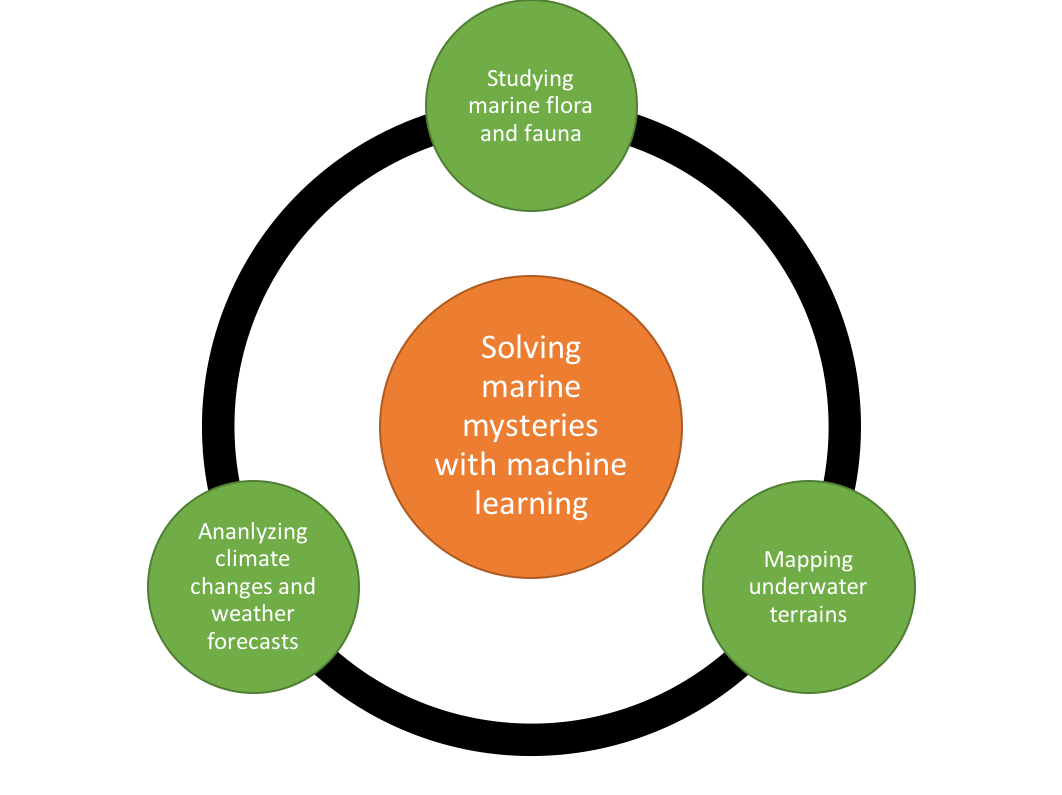
After mapping and understanding ground and aerial terrains, researchers are now exploring subterranean landscapes and unraveling marine mysteries with AI and machine learning.
Oceans constitute nearly 71% of the Earth’s surface, and almost 99% percent of these water bodies have living matter. The marine flora and fauna play an essential role in our ecosystem. Weather predictions, disaster management, climate change, or even the food industry are in some way or the other related to the underwater life cycle. Keeping this in mind, oceanologists and scientists are now studying and solving the marine mysteries with AI.
Applying AI and Machine Learning to Marine Mysteries
Water and machines usually don’t go well together. Designing aquatic robots once seemed impossible. But, with advancements in the field of material science, resources are available to build robots that not only explore underwater terrains but also analyze them in real-time, withstanding the extreme physical conditions that oceans offer. Robotic marine vehicles equipped with AI are prevalent for studying the aquatic lifeforms as well as the landforms. With intensive sensors, cameras, and exhaustive communication systems to accurately communicate with the ground station, marine robots explore, gather, and study the data collected from below the seas to expand and interpolate our existing databases. Excavations are carried out under the oceans to dig out records and proofs of the earliest lifeforms in archaeology. Environmental scientists, to track the imbalances in the ecosystem, study the population of fishes and their growth trends. Underwater currents, temperature, tides, and the composition of water is used in weather forecasting and meteorology departments. Along with helping us understand how other sectors work in sync with the oceans, a study of the marine life offers insights into the aquatic ecosystem. Understanding the relation between different species and how one affects the other, dependence of life forms, both flora and fauna, on each other, causes of underwater disasters like tsunamis and hurricanes are studied by exploring these areas with sophisticated robots and navigation systems. Such underwater AI capabilities are also used to map terrains and optimize navigation routes for naval application particularly. The bots live-stream the videos from under the oceans to the ground stations, thus providing data to the mappers for planning optimized routes with minimum error.
Solving the Marine Mysteries with AI
One of the greatest mysteries of all times, the Bermuda Triangle, is expected to get solved with the help of AI. NASA scientists deployed both, marine and aerial imaging systems, in the area to gather data on what exactly happens at the epicentre of the region. On studying the data, researchers noticed hexagonally shaped clouds that affect the ocean wave height drastically by 45 feet. This analysis wouldn’t have been possible without complex yet sturdy machinery that would be able to navigate and communicate from within the rough seas. Another example of solving marine mysteries with remotely piloted marine vehicles is the case study of the Charles River. Every year, during spring, the icebergs melt, raising the water levels as a sign of warm weather. The students of MIT, with their professor, build bots to study the causes and consequences of such environmental changes. These studies are then applied and extended to naval and marine applications for building systems that can minimize the damage. AI has successfully proved its potential for ground level applications. It’s application in the underwater domain, however, will still need some time to be mastered. But considering the self-teaching and learning nature that AI machines have, they are bound to solve even the last mystery that the oceans hold.

